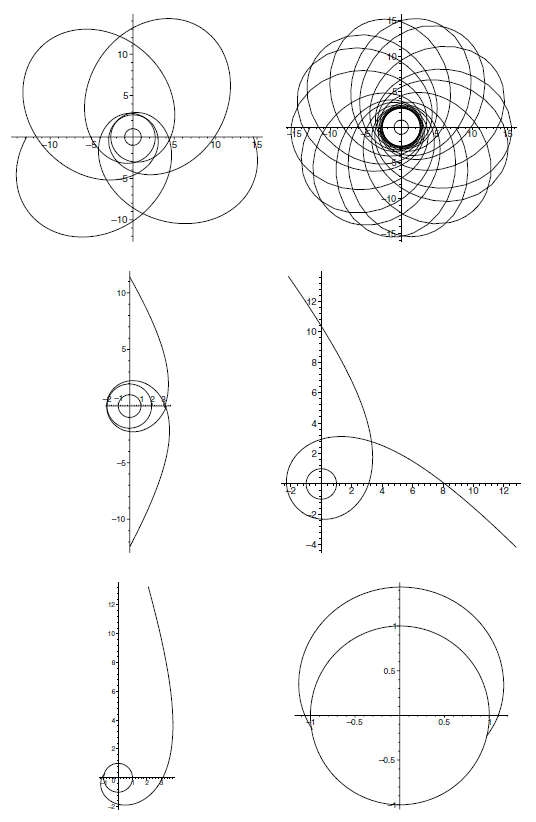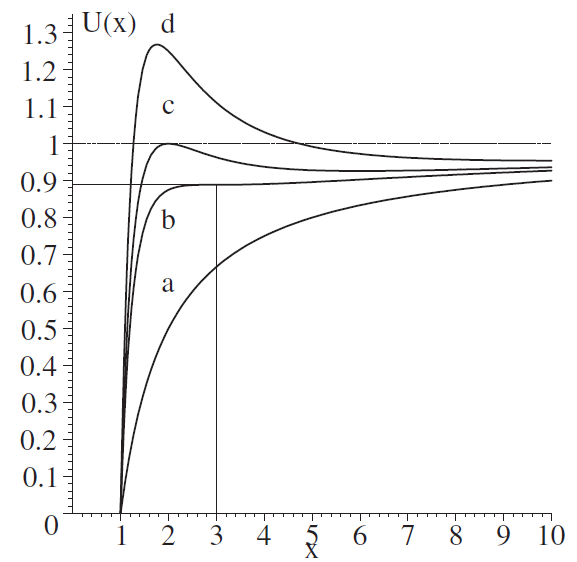
تاريخ الفيزياء

علماء الفيزياء


الفيزياء الكلاسيكية

الميكانيك

الديناميكا الحرارية


الكهربائية والمغناطيسية

الكهربائية

المغناطيسية

الكهرومغناطيسية


علم البصريات

تاريخ علم البصريات

الضوء

مواضيع عامة في علم البصريات

الصوت


الفيزياء الحديثة


النظرية النسبية

النظرية النسبية الخاصة

النظرية النسبية العامة

مواضيع عامة في النظرية النسبية

ميكانيكا الكم

الفيزياء الذرية

الفيزياء الجزيئية


الفيزياء النووية

مواضيع عامة في الفيزياء النووية

النشاط الاشعاعي


فيزياء الحالة الصلبة

الموصلات

أشباه الموصلات

العوازل

مواضيع عامة في الفيزياء الصلبة

فيزياء الجوامد


الليزر

أنواع الليزر

بعض تطبيقات الليزر

مواضيع عامة في الليزر


علم الفلك

تاريخ وعلماء علم الفلك

الثقوب السوداء


المجموعة الشمسية

الشمس

كوكب عطارد

كوكب الزهرة

كوكب الأرض

كوكب المريخ

كوكب المشتري

كوكب زحل

كوكب أورانوس

كوكب نبتون

كوكب بلوتو

القمر

كواكب ومواضيع اخرى

مواضيع عامة في علم الفلك

النجوم

البلازما

الألكترونيات

خواص المادة


الطاقة البديلة

الطاقة الشمسية

مواضيع عامة في الطاقة البديلة

المد والجزر

فيزياء الجسيمات


الفيزياء والعلوم الأخرى

الفيزياء الكيميائية

الفيزياء الرياضية

الفيزياء الحيوية

الفيزياء العامة


مواضيع عامة في الفيزياء

تجارب فيزيائية

مصطلحات وتعاريف فيزيائية

وحدات القياس الفيزيائية

طرائف الفيزياء

مواضيع اخرى
Types of trajectory
المؤلف:
Heino Falcke and Friedrich W Hehl
المصدر:
THE GALACTIC BLACK HOLE Lectures on General Relativity and Astrophysics
الجزء والصفحة:
p 130
2-2-2017
2174
Types of trajectory
1.1 Bound and unbound trajectories
The specific energy of a moving particle remains constant; in figure 1.1 this motion is shown by a horizontal line. The intersection of the horizontal line

Figure 1.1. An example of the effective black hole potential for ˜L > √3.
with the effective potential determines the turning points. The horizontal a with Ẽ1 < 1 corresponds to the motion in a bound region in space between r1 and r2; this is an analogue of elliptic motion in Newtonian theory. The corresponding trajectory is not a conic section, and, in general, is not closed. If the orbit as a whole lies far from the black hole, it is an ellipse which slowly rotates in the plane of motion.
The segment b with Ẽ2 > 1 corresponds to a particle coming from infinity and then moving back to infinity (an analogue of hyperbolic motion). Finally, the segment c with Ẽ3 does not intersect the potential curve but passes above its maximum Ẽmax. It corresponds to a particle falling into the black hole (gravitational capture). This type of motion is impossible in Newtonian theory and is typical for the black hole. Gravitational capture becomes possible because the effective potential has a maximum. No such maximum appears in the effective potential of Newtonian theory.
In addition, another type of motion is possible in the neighborhood of a black hole. This line d (with energy Ẽ4) may lie below or above unity, stretching from rS to the intersection with the curve V (r ). This segment represents the motion of a particle which, for example, first recedes from the black hole and reaches rmax (at the point of intersection of Ẽ4 and V (r )), and then again falls toward the black hole and is absorbed by it. Examples of different types of trajectory are shown in figure 1.2.

Figure 1.2. Different types of particle trajectory.
A body can escape to infinity if Ẽ ≥ 1. From equation
 (1.1)
(1.1)

Figure 1.3. Effective black hole potential for different values of ˜ L : (a) ˜L = 0, (b) ˜L = √3, (c) ˜L = 2, and (d) ˜L = √6.
we find the escape velocity as
 (1.2)
(1.2)
which coincides with the Newtonian expression. Note that in Newtonian theory in the gravitational field of a pointlike mass, the escape velocity guarantees the escape to infinity regardless of the direction of motion. The case of the black hole is different. Even if a particle has the escape velocity, it can be trapped by the black hole, the latter occurring if the particle moves towards the black hole. We have already mentioned this effect, calling it gravitational capture.
1.2 Circular motion
For circular motion around a black hole dr/dτ ≡ 0. This motion is represented in figure 1.1 by a point at the extremum of the effective potential curve. A point at the minimum corresponds to a stable motion, and a point at the maximum to an unstable motion. The latter motion has no analogue in Newtonian theory and is specific to black holes. If the motion of a particle is represented by a horizontal line Ẽ= constant very close to Ẽmax, then the particle makes many turns around the black hole at a radius close to r corresponding to Ẽmax before the orbit moves far away from this value of r . The shape and the position of the potential V (r ) are different for different ˜L : the corresponding curves for some values of ˜L are shown in figure 1.3.
The maximum and minimum appear on V(r ) curves when ˜L > √3. If ˜L < √3 the V(r ) curve is monotone. Hence, the motion on circular orbits is possible only if ˜L > √3. The minima of the curves then lie at r > 3rS. Stable circular orbits thus exist only for r > 3rS. At smaller distances, there are only unstable circular orbits corresponding to the maximum of Ẽmax curves. If ˜L →∞, the position of the maximum of the Ẽmax curve decreases to r = 1.5rS. Even unstable inertial circular motion becomes impossible at r less than 1.5rS.
The critical circular orbit that separates stable motions from unstable ones corresponds to r = 3rS. Particles move along it at a velocity v = c/2, the energy of a particle being %E = √8/9 ≈ 0.943. This is the motion with the maximum possible binding energy E ≈ 0.057 mc2.
Let us emphasize the importance of this result for black hole astrophysics. Suppose a non-rotating black hole is surrounded by a thin accretion disk. Let us follow the time evolution of a matter element of the disc. It is moving along a practically circular orbit slowly losing its energy and angular momentum until it reaches the position of the last stable circular orbit. After this, it falls almost freely into the black hole. This means that the maximum efficiency of the energy release by matter falling into a non-rotating black hole is 5.7%.
The velocity on (unstable) orbits, with r < 3rS, increases as r decreases from c/2 to c on the last circular orbit with r = 1.5rS. When r = 2rS, the particle's energy is Ẽ= 1, that is, the circular velocity is equal to the escape velocity. If r is still smaller, the escape velocity is smaller than the circular velocity. There is no paradox in it, since the circular motion here is unstable and even the tiniest perturbation (supplying momentum away from the black hole) transfers the particle to an orbit moving it to infinity, that is, an orbit corresponding to hyperbolic motion.
 الاكثر قراءة في الثقوب السوداء
الاكثر قراءة في الثقوب السوداء
 اخر الاخبار
اخر الاخبار
اخبار العتبة العباسية المقدسة

الآخبار الصحية















 قسم الشؤون الفكرية يصدر كتاباً يوثق تاريخ السدانة في العتبة العباسية المقدسة
قسم الشؤون الفكرية يصدر كتاباً يوثق تاريخ السدانة في العتبة العباسية المقدسة "المهمة".. إصدار قصصي يوثّق القصص الفائزة في مسابقة فتوى الدفاع المقدسة للقصة القصيرة
"المهمة".. إصدار قصصي يوثّق القصص الفائزة في مسابقة فتوى الدفاع المقدسة للقصة القصيرة (نوافذ).. إصدار أدبي يوثق القصص الفائزة في مسابقة الإمام العسكري (عليه السلام)
(نوافذ).. إصدار أدبي يوثق القصص الفائزة في مسابقة الإمام العسكري (عليه السلام)


















